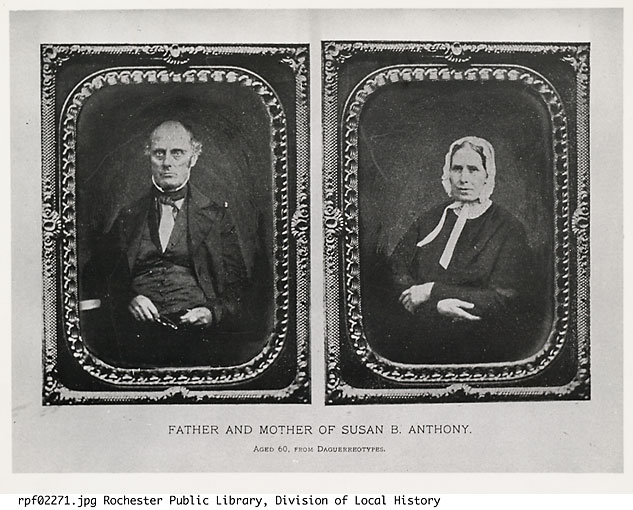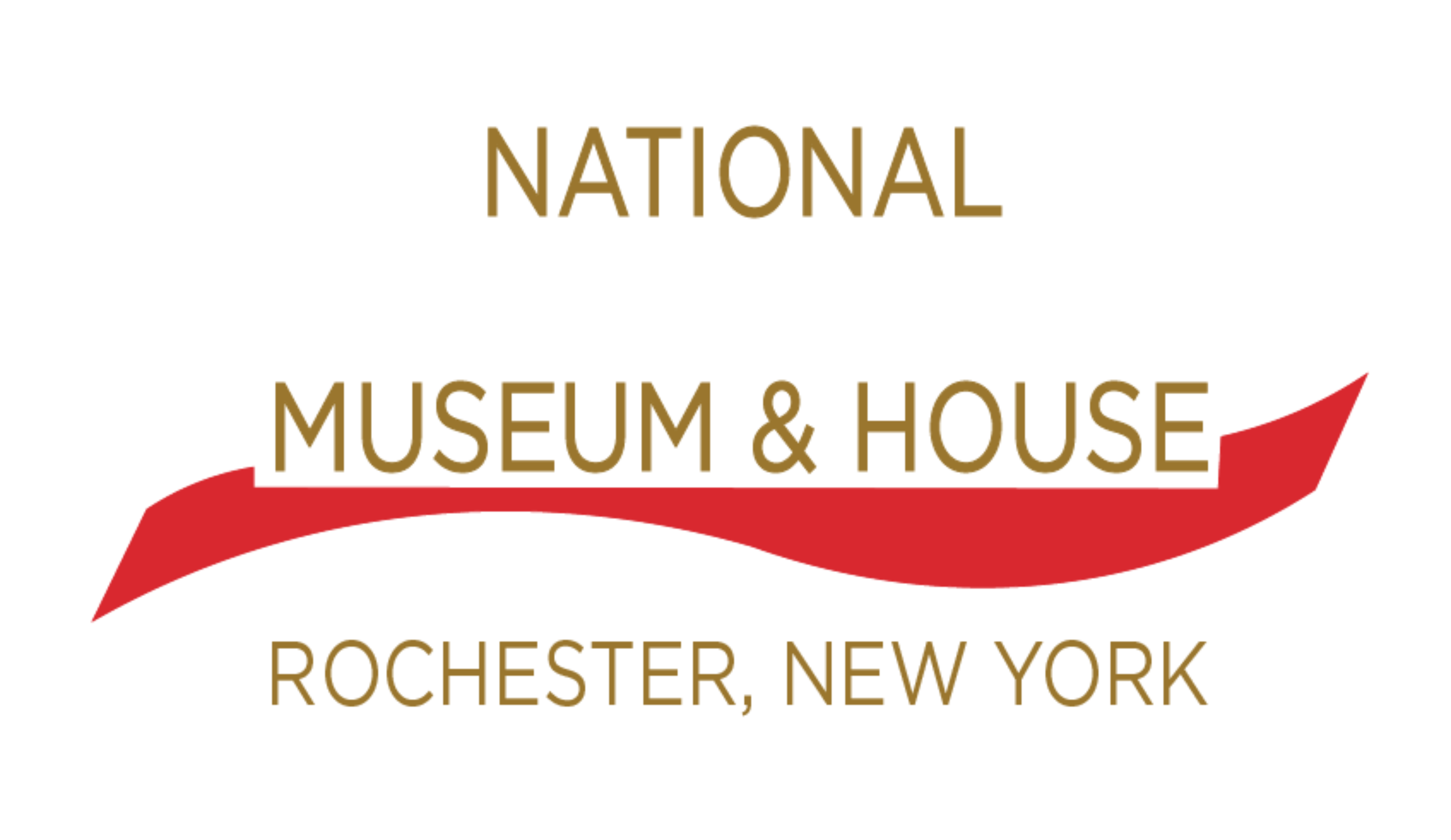1820 – Susan Brownell Anthony is born on February 15 in Adams, Massachusetts, the second of seven children.
1826 – The Anthony family moves to Battenville, New York.
1838 – Daniel Anthony takes daughters Susan and Guelma out of school. The 1837 depression causes him to declare bankruptcy and the family loses the Battenville house.
1845 – The Anthony family moves to Rochester, New York, on the Erie Canal. Their farm on what is now Brooks Avenue becomes a meeting-place for anti-slavery activists, including Frederick Douglass.
1846 – Susan B. Anthony begins teaching at Canajoharie Academy for a yearly salary of $110.
1851 – Susan B. Anthony travels to the anti-slavery convention in Seneca Falls, New York. She visits Amelia Bloomer, hears William Lloyd Garrison and George Thompson, and meets Elizabeth Cady Stanton.
1852 – Anthony attends a New York State convention of Sons of Temperance and is told to “listen and learn,” which goes against her Quaker upbringing. She attends her first women’s rights convention.
1854 – Anthony circulates petitions for married women’s property rights and woman suffrage. She is refused permission to speak at the Capitol and Smithsonian in Washington. She begins her New York State campaign for woman suffrage in Mayville, Chautauqua County, speaking and traveling alone.
1856 – Anthony becomes agent for the American Anti-Slavery Society.
1857 – At a New York State Teachers’ Convention in Binghamton Anthony calls for education for women and Blacks.
1861 – Anthony conducts anti-slavery campaign from Buffalo to Albany-“No Union with Slaveholders. No Compromise.”
1863 – Anthony and Stanton write the “Appeal to the Women of the Republic.”
1868 – Anthony begins publication of The Revolution and forms Working Women’s Associations for women in the publishing and garment trades.
1869 – Anthony calls the first Woman Suffrage Convention in Washington D.C.
1872 – Anthony is arrested for voting in the front parlor of 7 Madison Street (now 17 Madison) on November 18 and is indicted in Albany. She continues to lecture and attend conventions.
1873 – Anthony is tried and fined $100 with costs after the judge ordered the jury to find her guilty. Anthony refuses to pay but is not imprisoned so cannot appeal the verdict.
1881 – Anthony, Stanton, and Matilda Joslin Gage publish Volume I of the History of Woman Suffrage, followed by Volumes II, III and IV in 1882, 1885 and 1902.
1898 – The Life and Work of Susan B. Anthony, A Story of the Evolution of the Status of Women is published. Anthony establishes a press bureau to feed articles on woman suffrage to the national and local press.
1900 – Anthony pledges the cash value of her life insurance to meet the University of Rochester’s financial demands for the admission of women.
1902 – Anthony delivers the keynote address to the New York State Nurses Convention, advocating for the standardization of training and state registration of nurses. The Nurses Practice Act is passed in 1903.
1905 – Anthony meets with President Theodore Roosevelt in Washington, D.C., about submitting a suffrage amendment to Congress.
1906 – Anthony attends suffrage hearings in Washington, D.C., She gives her “Failure is Impossible” speech at her 86th birthday celebration. Anthony dies at her Madison Street home on March 13.
1920 – The 19th Amendment to the U.S. Constitution, also known as the Susan B. Anthony amendment, grants the right to vote to all U.S. women over 21.

